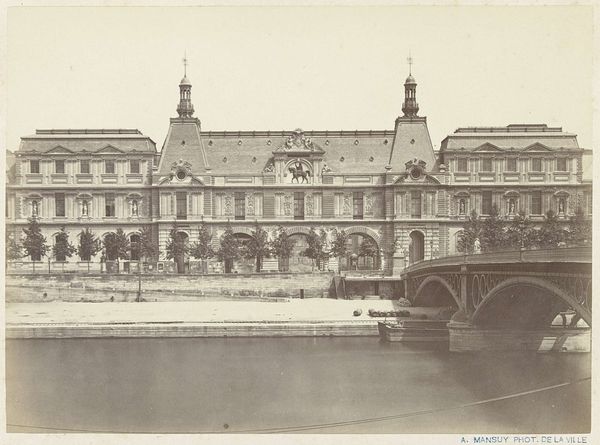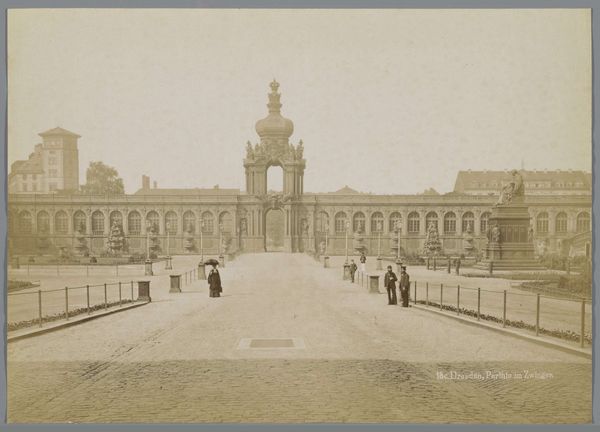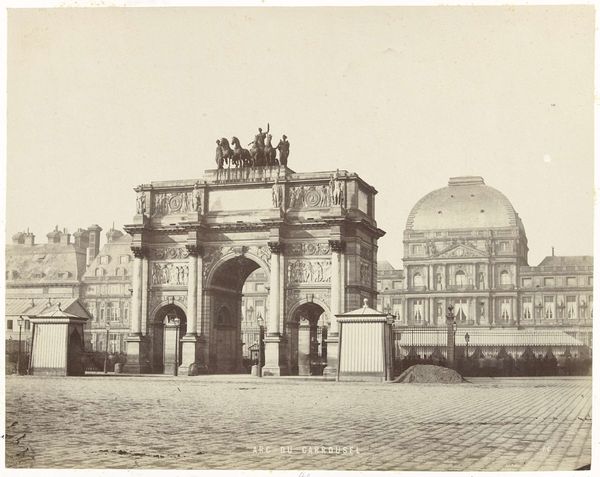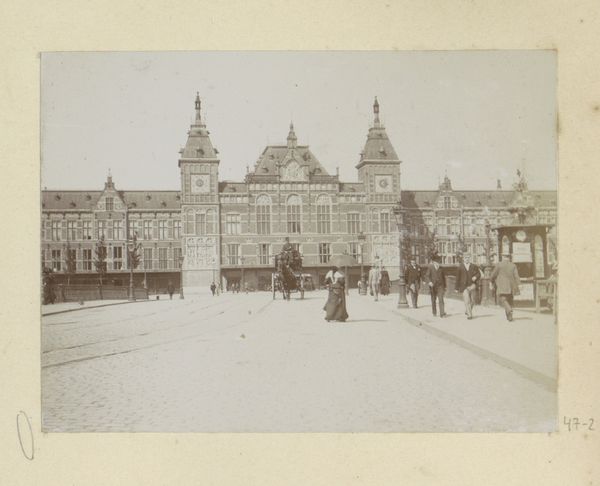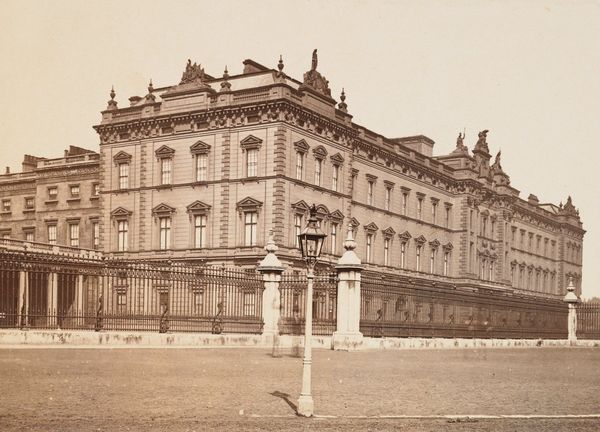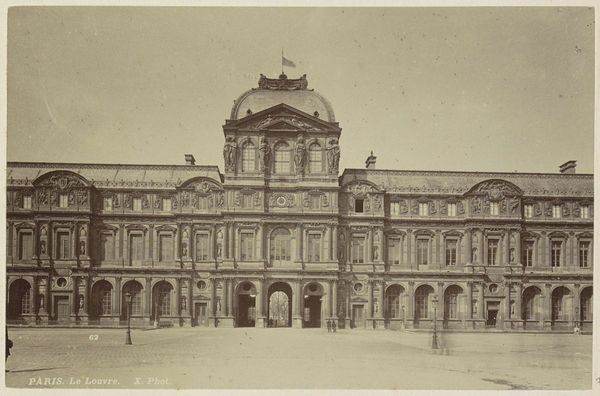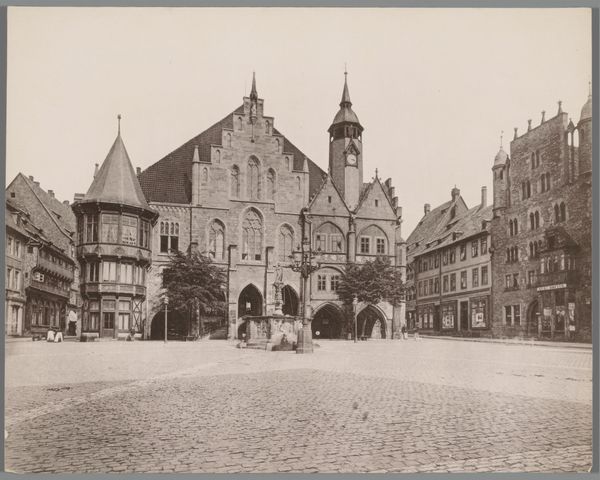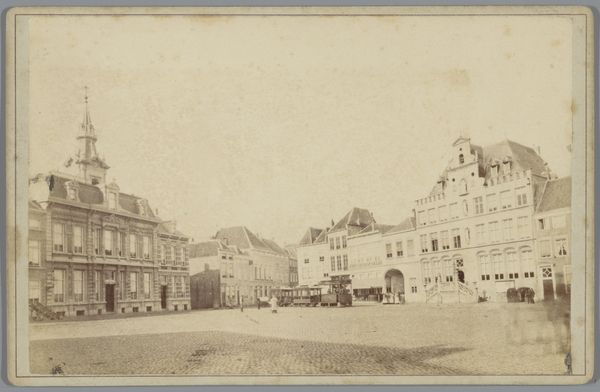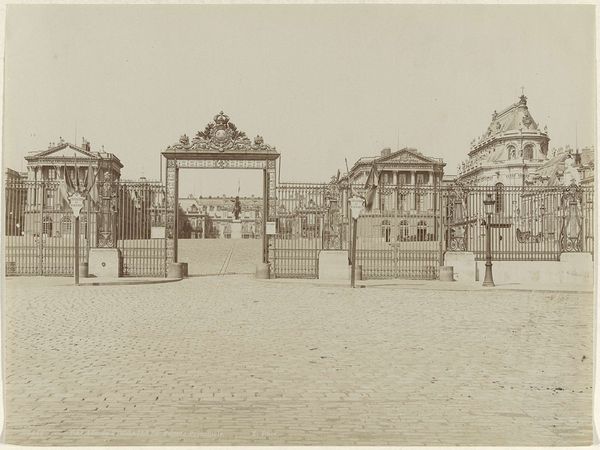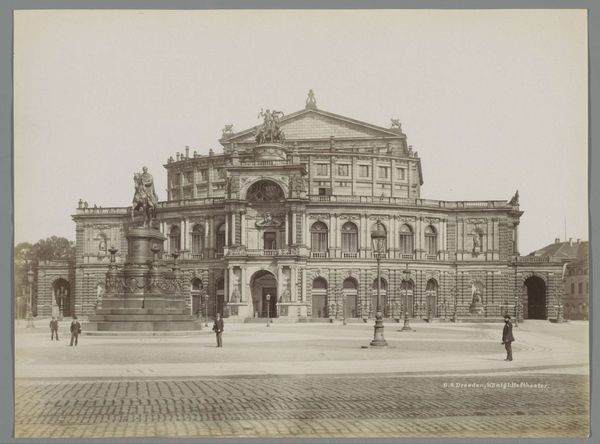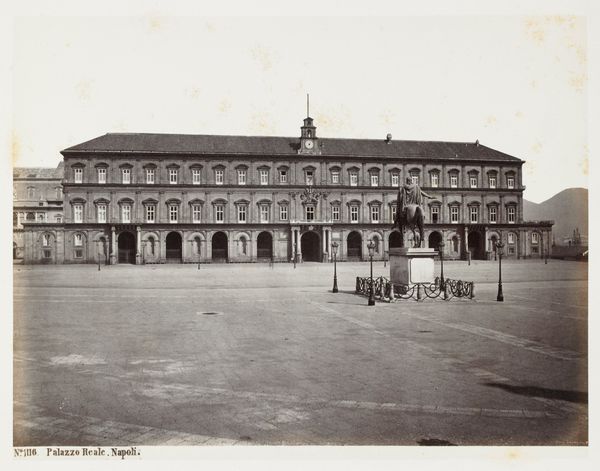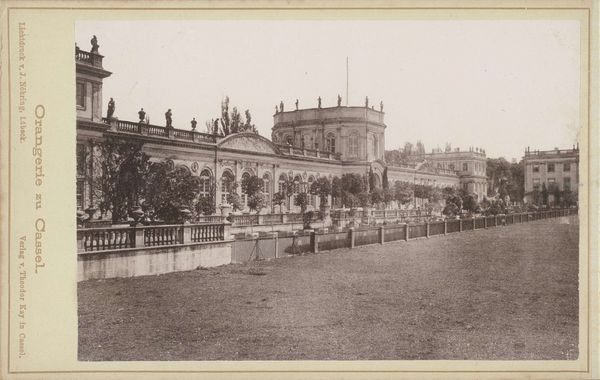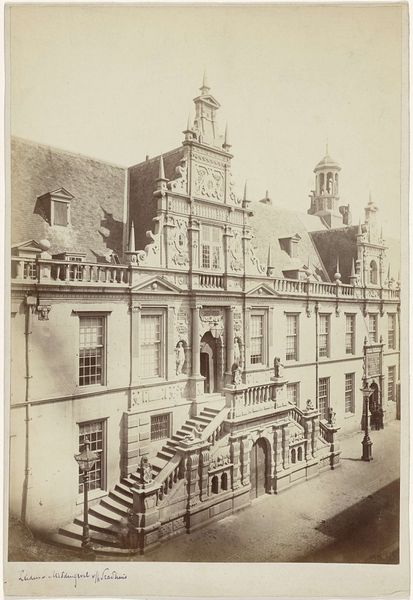
Voorbijgangers en paardenkoetsen bij de poorten van het Louvre in Parijs c. 1880 - 1900
0:00
0:00
photography, gelatin-silver-print
#
16_19th-century
#
outdoor photo
#
photography
#
historical photography
#
gelatin-silver-print
#
19th century
#
cityscape
Dimensions: height 210 mm, width 279 mm
Copyright: Rijks Museum: Open Domain
Editor: This gelatin-silver print, "Passersby and Horse-Drawn Carriages at the Gates of the Louvre in Paris" by Étienne Neurdein, dating from around 1880 to 1900, feels so still, almost dreamlike despite being a city scene. What strikes you about this piece? Curator: The gelatin-silver process itself is key here. Consider the industrialization of photography at this time, the way images could be mass-produced and disseminated. This wasn't just art, it was a new form of documentation, shaped by developing chemical processes and manufacturing capabilities. Editor: So the materiality and the *making* are really significant. Curator: Precisely. The photographic print democratized image production, moving away from unique, hand-crafted artworks. What social changes accompanied this shift? Who was given the ability to portray the world they lived in and disseminate it? Think about what these images might have meant for ordinary people. Were they propaganda? Souvenirs? Did they contribute to building any national identity? Editor: That's fascinating, because it's easy to just see a pretty cityscape and not consider the broader context. I'm also now wondering about who had access to even be photographed. Curator: Exactly! Think about labor involved – from the photographers themselves to the factory workers producing the photographic paper. All of this informs our understanding beyond just the image. This process allowed more views of Paris to travel. Were there also photos showing labor unrest, and social conflicts? What were the means of distribution of *those* photographs, in comparison? Editor: So, looking at this as more than just a photograph gives us insight into the social and material conditions of late 19th-century Paris. Thanks for making me consider that! Curator: My pleasure. It’s important to look beyond the surface, examine the nuts and bolts and cogs to discover how art participates and is embroiled within a system.
Comments
No comments
Be the first to comment and join the conversation on the ultimate creative platform.
